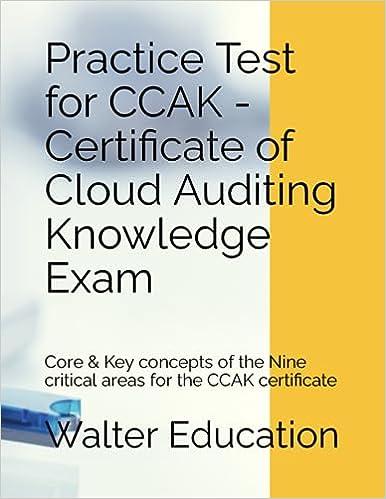Exercise 6-21 Part 2 a. At the end of January, the company estimates that the remaining units of inventory are expected to sell in February
Exercise 6-21 Part 2
a. At the end of January, the company estimates that the remaining units of inventory are expected to sell in February for only $100 each. b. The company estimates future uncollectible accounts. The company determines $5,700 of accounts receivable on January 31 are past due, and 40% of these accounts are estimated to be uncollectible. The remaining accounts receivable on January 31 are not past due, and 5% of these accounts are estimated to be uncollectible. (Hint: Use the January 31 accounts receivable balance calculated in the general ledger.) c. Accrued interest expense on notes payable for January. Interest is expected to be paid each December 31. d. Accrued income taxes at the end of January are $14,000. 2. Record adjusting entries on January 31 for the above transactions. (If no entry is required for a transaction/event, select "No journal entry required" in the first account field.)





Exercise 6-21 Complete the accounting cycle using inventory transactions (LO6-2, 6-3, 6-5, 6-6, 6-7) [The following information applies to the questions displayed below. On January 1, 2021, the general ledger of Big Blast Fireworks includes the following account balances: Accounts Cash Accounts Receivable Allowance for Uncollectible Accounts Inventory Land Accounts Payable Notes Payable (12%, due in 3 years) Common Stock Retained Earnings Totals Debit Credit $ 25, 300 45,000 $ 3,700 47,000 87,100 26,700 47,000 73,000 54,000 $204,400 $204,400 The $47,000 beginning balance of inventory consists of 470 units, each costing $100. During January 2021, Big Blast Fireworks had the following inventory transactions: January 3 Purchase 1,550 units for $170,500 on account ($110 each). January 8 Purchase 1,650 units for $189,750 on account ($115 each). January 12 Purchase 1,750 units for $210,000 on account ($120 each). January 15 Return 185 of the units purchased on January 12 because of defects. January 19 Sell 5,100 units on account for $765,000. The cost of the units sold is determined using a FIFO perpetual inventory system. January 22 Receive $749,000 from customers on accounts receivable. January 24 Pay $520,000 to inventory suppliers on accounts payable. January 27 Write off accounts receivable as uncollectible, $2,600. January 31 Pay cash for salaries during January, $136,000. The following information is available on January 31, 2021. The following information is available on January 31, 2021. a. At the end of January, the company estimates that the remaining units of inventory are expected to sell in February for only $100 each. b. The company estimates future uncollectible accounts. The company determines $5,700 of accounts receivable on January 31 are past due, and 40% of these accounts are estimated to be uncollectible. The remaining accounts receivable on January 31 are not past due, and 5% of these accounts are estimated to be uncollectible. (Hint: Use the January 31 accounts receivable balance calculated in the general ledger.) c. Accrued interest expense on notes payable for January. Interest is expected to be paid each December 31. d. Accrued income taxes at the end of January are $14,000. Exercise 6-21 Part 2 a. At the end of January, the company estimates that the remaining units of inventory are expected to sell in February for only $100 each. b. The company estimates future uncollectible accounts. The company determines $5,700 of accounts receivable on January 31 are past due, and 40% of these accounts are estimated to be uncollectible. The remaining accounts receivable on January 31 are not past due, and 5% of these accounts are estimated to be uncollectible. (Hint: Use the January 31 accounts receivable balance calculated in the general ledger.) c. Accrued interest expense on notes payable for January. Interest is expected to be paid each December 31. d. Accrued income taxes at the end of January are $14,000. 2. Record adjusting entries on January 31 for the above transactions. (If no entry is required for a transaction/event, select "No journal entry required" in the first account field.) 1 At the end of January, the company estimates that the remaining units of inventory are expected to sell in February for only $100 each. Record the adjustment for net realizable value. 2 The company estimates future uncollectible accounts. The company determines $5,700 of accounts receivable on January 31 are past due, and 40% of these accounts are estimated to be uncollectible. The remaining accounts receivable on January 31 are not past due, and 5% of these accounts are estimated to be uncollectible. (Hint: Use the January 31 accounts receivable balance calculated in the general ledger.) Record the adjustment for uncollectible accounts. 3 Accrued interest expense on notes payable for January. Interest is expected to be paid each December 31. Record the adjustment for interest expense. 4 Accrued income taxes at the end of January are $14,000. Record the adjustment for income taxes. Note : = journal entry has been entered View transaction list View journal entry worksheet No Date General Journal Debit Credit 1 January 31 2,940 Costs of goods sold Inventory 2,940











